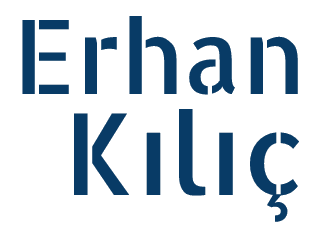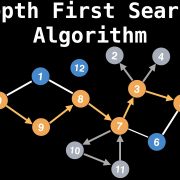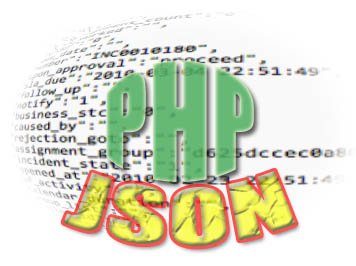Örneklerle PHP-FIG’in PSR Standartları
PHP Framework Interop Group (PHP-FIG), farklı çerçeveler arasında PHP bileşenlerinin ve kütüphanelerinin birlikte çalışabilirliğini artırmada önemli bir rol oynuyor. PHP-FIG’in en önemli katkılarından biri, “PHP Standart Önerileri” anlamına gelen PSR standartlarıdır. Bu standartlar, kodlama tarzı, otomatik yükleme ve daha pek çok konuda rehberlik sağlar; böylece PHP geliştirme sürecinde tutarlı ve işbirliğine dayalı bir yaklaşım sunar. Bu yazıda, önde gelen PSR standartlarını örneklerle keşfedeceğiz ve kendi projelerimden deneyimlerle bunları sizin için anlaşılır kılacağım. Haydi, başlayalım!
1. PSR-1: Temel Kodlama Standardı
PSR-1, PHP geliştiricilerinin tutarlı ve okunabilir bir kod tabanı oluşturmak için izlemesi gereken temel kuralları belirler. Önemli öneriler şunlardır:
- Satır içi kodlar için yalnızca <?php etiketlerini kullanmak ve saf PHP dosyalarında kapanış etiketini (?>) atlamak.
- Ad alanları (namespaces) ve sınıfların uygun büyük harf kullanımıyla tanımlanması.
Örnek:
<?php
namespace BenimAdAlanim;
class BenimSinif {
// Sınıf uygulaması
}Bu basit kurallar, bir projede çalıştığımda kodun okunabilirliğini artırdı ve ekip arkadaşlarımın kodumu hızlıca anlamasını sağladı.
2. PSR-2: Kodlama Tarzı Rehberi
PSR-1’in üzerine inşa edilen PSR-2, daha ayrıntılı kodlama tarzı kuralları sunar; projelerde tutarlı bir görünüm ve his sağlar. Girintiler, adlandırma kuralları ve daha fazlasını kapsar.
Örnek:
<?php
namespace BenimAdAlanim;
class BenimSinif
{
const BENIM_SABIT = 'deger';
protected $benimOzellik;
public function benimMetod($parametre)
{
if ($kosul) {
// Kod bloğu
}
}
}Bir web uygulamasında PSR-2’yi kullanarak kod yazdığımda, girintilerin ve tutarlı adlandırmanın projeyi ne kadar düzenli hale getirdiğini fark ettim. Ekip çalışmasında herkesin aynı tarzı kullanması, kodu anlamayı kolaylaştırdı.
3. PSR-4: Otomatik Yükleme Standardı
PHP projelerinde sınıfları otomatik yükleme, gerekli dosyaların dahil edilmesini kolaylaştırır. PSR-4, ad alanları ve dizin yapısına dayalı otomatik yükleme kurallarını tanımlar.
Örnek (Proje yapısı: proje/src/BenimAdAlanim/BenimSinif.php):
<?php
namespace BenimAdAlanim;
class BenimSinif {
// Sınıf uygulaması
}Bu basit kurallar, bir projede çalıştığımda kodun okunabilirliğini artırdı ve ekip arkadaşlarımın kodumu hızlıca anlamasını sağladı.
2. PSR-2: Kodlama Tarzı Rehberi
PSR-1’in üzerine inşa edilen PSR-2, daha ayrıntılı kodlama tarzı kuralları sunar; projelerde tutarlı bir görünüm ve his sağlar. Girintiler, adlandırma kuralları ve daha fazlasını kapsar.
Örnek:
<?php
namespace BenimAdAlanim;
class BenimSinif
{
const BENIM_SABIT = 'deger';
protected $benimOzellik;
public function benimMetod($parametre)
{
if ($kosul) {
// Kod bloğu
}
}
}Bir web uygulamasında PSR-2’yi kullanarak kod yazdığımda, girintilerin ve tutarlı adlandırmanın projeyi ne kadar düzenli hale getirdiğini fark ettim. Ekip çalışmasında herkesin aynı tarzı kullanması, kodu anlamayı kolaylaştırdı.
3. PSR-4: Otomatik Yükleme Standardı
PHP projelerinde sınıfları otomatik yükleme, gerekli dosyaların dahil edilmesini kolaylaştırır. PSR-4, ad alanları ve dizin yapısına dayalı otomatik yükleme kurallarını tanımlar.
Örnek (Proje yapısı: proje/src/BenimAdAlanim/BenimSinif.php):
<?php
// Otomatik yükleyici kurulumu
spl_autoload_register(function ($sinifAdi) {
$onEk = 'BenimAdAlanim\\';
$temelDizin = __DIR__ . '/src/';
$uzunluk = strlen($onEk);
if (strncmp($onEk, $sinifAdi, $uzunluk) !== 0) {
return;
}
$goreceliSinif = substr($sinifAdi, $uzunluk);
$dosya = $temelDizin . str_replace('\\', '/', $goreceliSinif) . '.php';
if (file_exists($dosya)) {
require $dosya;
}
});
// Kullanım
$benimNesne = new BenimAdAlanim\BenimSinif();Bir kütüphane geliştirirken PSR-4 ile otomatik yükleme kullandım ve bu, dosya yönetimini inanılmaz derecede kolaylaştırdı. Kod tabanım düzenli ve modüler hale geldi.
4. PSR-7: HTTP Mesaj Arayüzü
Bu standart, istek ve yanıt gibi HTTP mesajları için arayüzler tanımlar. Web bileşenleri ve çerçeveler arasında daha iyi birlikte çalışabilirlik sağlar.
Örnek:
<?php
use Psr\Http\Message\ServerRequestInterface;
use Psr\Http\Message\ResponseInterface;
function istegiIsle(ServerRequestInterface $istek): ResponseInterface {
// İsteği işle ve bir yanıt oluştur
// ...
return $yanit;
}Bir API projesinde PSR-7 kullanarak HTTP isteklerini yönettim ve farklı çerçevelerle uyumluluğun ne kadar kolaylaştığını gördüm.
5. PSR-11: Konteyner Arayüzü
Konteynerler, PHP projelerinde bağımlılıkları yönetmek için yaygın bir yöntemdir. PSR-11, bağımlılıklara tutarlı bir şekilde erişmek ve yönetmek için bir arayüz tanımlar.
Örnek:
<?php
use Psr\Container\ContainerInterface;
class OrnekServis {
private $bagimlilik;
public function __construct(ContainerInterface $konteyner) {
$this->bagimlilik = $konteyner->get('BagimlilikSinifi');
}
}Bir bağımlılık enjeksiyonu projesinde PSR-11 kullanarak modüler bir yapı oluşturduğumda, kodun bakımını ve test edilmesini çok daha kolay hale getirdim.
Sonuç
PHP-FIG’in PSR standartları, PHP projelerinde işbirliğini, bakımı ve kod kalitesini artırır. PSR-1’den PSR-11’e kadar bu standartlar, kütüphaneler ve çerçeveler arasında tutarlılık sağlar. Bir web uygulaması geliştirirken bu standartları uyguladığımda, kod tabanımın ne kadar düzenli ve işbirliğine açık hale geldiğini gördüm. Bu standartlara bağlı kalarak, daha güçlü ve uyumlu bir PHP ekosistemine katkıda bulunabilirsiniz.
Siz PSR standartlarını hangi projelerde kullandınız? İlginç bir deneyim mi yaşadınız? Yorumlarda paylaşın, birlikte tartışalım! Daha fazla ipucu için bloguma göz atın veya benimle iletişime geçin!






